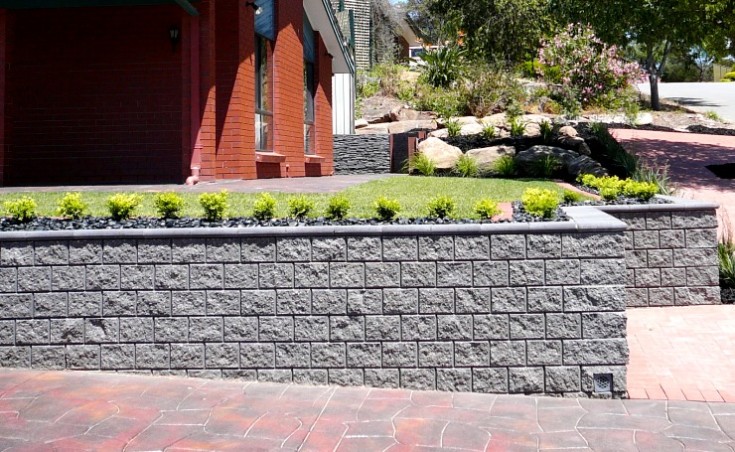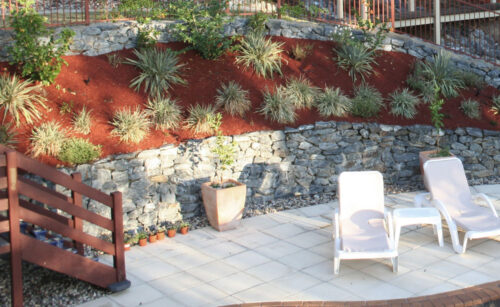Concrete Retaining Wall Blocks & Long Term Solution.
Adelaide retaining wall blocks are a popular choice for building retaining walls in gardens. Made of concrete but emulating a stone finish, concrete retaining wall blocks Adelaide homeowners choose because they’re low maintenance and will last a lifetime. This article will look at the different types of concrete retaining wall blocks available and their suitability to landscaping different retaining situations, such as garden edging, garden beds plus retaining sloping blocks, creating a more practical and usable area for your garden.
Advantages Of Concrete Retaining Wall Blocks.
For most residential situations, the use of concrete blocks is used because they are relatively cheap and are referred to more technically by landscapers and engineers as ‘segmental block gravity retaining structures’. These structures consist of concrete blocks that stack on top of each other without using mortar, ‘dry stacked’, and require no concrete base or ‘footing’. The blocks themselves sometimes contain ‘voids’ which can be filled with quarry rubble or blue metal road base; which allows for easy water drainage to create an even stronger retaining wall. Depending on the height your retaining wall needs to be and the make-up of the surrounding soil, some retaining wall block systems allow for greater weight and pressure on the wall by incorporating a 1-in-8 setback towards the area to be backfilled. Pins and reinforcement material can also be incorporated to high performance segmental block retaining wall systems.
- relatively inexpensive,
- requires no concrete foundation,
- used in straight or curved walls,
- low maintenance & durable,
- flexible to various conditions,
- easy installation.
Block Face Types Available
Each type of ‘face’ is created by using a different manufacturing process to recreate popular stone finishes. Many blocks are part of an overall retaining wall system that includes a standard block, a corner block and a capping block which finishes the retaining wall off at the top.
Split Face Concrete Blocks
Split face blocks are created by the splitting process the blocks undergo, producing a rough textured finish with the aggregate in the concrete visible.
Smooth Face
A smooth textured finish is created through a standard moulding process.
Shot-Blast Face
This process exposes the aggregate in the concrete subtly, to a far less degree that it shows in a split face block, producing a finish similar to weathered sawn stone.
Honed Face
The honing process grinds just a few millimetres from the block face, enough to show the aggregate in a matt finish.
Polished Face
Starting with a denser concrete block, the face is first honed and then polished. Polishing brightens the colour of the aggregate, making the blocks perfect for for feature walls, borders or banding.
Tips for choosing concrete blocks for your retaining wall:
Your retaining wall; if made with concrete blocks and installed correctly will last many years.
- Spend time looking at different examples around your neighbourhood
- Measure the height & length to calculate the number of blocks
- Select the face you would prefer, the colour and capping
- Check with the council regarding any height limitations and encumbrances
If you would like to know how to build a concrete block retaining wall in your garden, contact the retaining wall specialists Visual Landscape Gardening who have over 30 years experience building all types of retaining walls for Adelaide gardens.



 Rubber Mulch & Soft Fall Rubber Surfaces Adelaide
Rubber Mulch & Soft Fall Rubber Surfaces Adelaide Low Maintenance Garden Makeover Walkerville
Low Maintenance Garden Makeover Walkerville Backyard Landscape Design Brought to Life
Backyard Landscape Design Brought to Life

